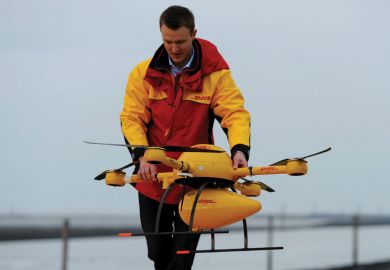Academics are increasingly as keen to introduce technology-enhanced learning spaces into their teaching as senior management are, according to the author of research into e-learning.
Dominic Pates, educational technologist in the department of learning enhancement and development at City University London, suggested that scholars wanted to adapt their own teaching because they understood that the traditional lecture theatre was, in some cases, limiting the engagement of their students.
His comments were informed by the findings of his paper “E-learning spaces and the digital university”, published in The International Journal of Information and Learning Technology.
“[We had] responses from specific academic departments saying our curriculum’s changing, we’re moving from more lecture-based work to more problem-based learning…and we would like a learning space that would better facilitate that kind of curriculum,” he told Times Higher Education.
“We’re looking to deliver a more student-centred learning experience these days. For example, swivel seating in a lecture theatre [allows] the academic to incorporate group work into the traditional lecture in ways you can’t do in [theatres] that are in rows.”
Mr Pates’ research used his institution as a case study to investigate the idea that “innovations in physical learning spaces” are one approach to addressing the “profound challenges facing higher education”.
He gave an example of a discussion group for City students that was held in a room with “lots of focal points where students’ attention could go” rather than a traditional lecture theatre.
“[It was] very interesting that one [student] told me that when there were lots more places she could look, she was much more focused on what the lecturer was saying, on the subject material. [She said] in a traditional lecture theatre, ‘I’m being told where to look, and I like to have a degree of agency in what I’m doing.’
“A focus on the importance of space in enhancing learning has been a key driver here. What we’ve tried to develop is a spectrum of flexibility. If you still want to deliver a lecture as an academic, then some of our spaces allow them to do that in more flexible ways,” he said.
Register to continue
Why register?
- Registration is free and only takes a moment
- Once registered, you can read 3 articles a month
- Sign up for our newsletter
Subscribe
Or subscribe for unlimited access to:
- Unlimited access to news, views, insights & reviews
- Digital editions
- Digital access to THE’s university and college rankings analysis
Already registered or a current subscriber?






